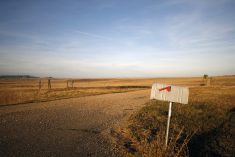The key is to create saving strategies that work for your farm and your family
Sometimes the choices seem easy, like saying “no” to registered education savings plans.
When you’re young, the mortgage looms so large. If there is any spare cash, registered retirement savings plans at least are tax
deductible. Tucking scarce dollars into a registered education savings plan doesn’t even have that advantage.
It’s a no-brainer. The money of course should go to pay off debt or invest in new assets.
Read Also

Producers aren’t panicking over tariffs and trade threats
The Manitoba Canola Growers Association (MCGA) surveyed its members this spring to get a sense of how trade uncertainty was…
Or should it?
In fact, on many farms there’s a strong argument to be made that a Registered Education Savings Plan (RESP) — bolstered by government grants — may be your wisest move, especially with some of the management tips that farm business advisors can recommend.
Most financial advisors suggest small monthly payments because they’re easier on cash flow. Also, you start earning tax-sheltered investment income right away, so the sooner it goes in, the greater the net benefit.
“You’re going to have to pay the education piper someday,” says Ted Clysdale, a financial planner from Investment House Canada. “You might as well start saving early.”
If that sounds like a grudging endorsement, it may be because Clysdale, with a daughter attending Trent University in Peterborough, Ont., knows all too well how costly post-secondary education can be.
Although she lives at home, university is still costing the Clysdale family $15,000 per year.
Don McCannell, owner of McCannell Financial Group in Saskatoon, estimates that within 10 years, four years of university will cost nearly $88,000. At a minimum, says McCannell, “Parents need to prepare for $60,000 to $80,000 per child to go to university in the future.”
A RESP can help. Yes, contributions are after-tax, so you aren’t allowed to deduct the money as you put it into the plan. However, once it’s in the plan, the money grows tax-free until it’s withdrawn for education after high school. The contributions and their investment earnings are taken out by the student and taxed at their income tax rate, meaning they are usually tax-free.
A major additional benefit with an RESP is the annual Canada Education Savings Grant of up to 20 per cent of the first $2,500 you contribute.
Note that the CESG grant applies to children only up to 17 years old, and you can go back only one year.
The Canada Learning Bond is an additional grant worth up to $2,000 for children born after 2003, providing your net family income is less than about $38,000.
Both grants are automatically deposited when you set up an RESP. (If you live in Alberta, you may also be eligible for the Alberta Centennial Education Savings Grant.)
Your financial advisor or institution should be able to help you choose an RESP savings plan to fit your family and business. For a list of businesses that provide RESPs check out: www.hrsdc.gc.ca/en/learning/education_savings/publicsection/new_promoter_list. shtml.
There are three general types of plans — family plans, individual plans or group plans. Group plans are for businesses with many employees. With a family plan, all investments for the children are combined and the benefactors have to be related. Anyone can open an RESP for an individual.
McCannell says he’s now a proud grandpa and has set up RESPs for his grandchildren. All you need is their social insurance number. By the way, one














